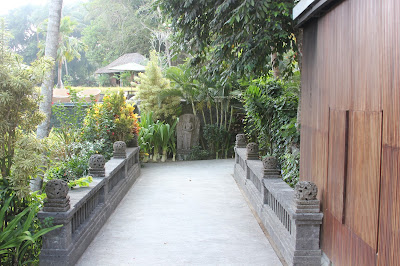Oct 30, 2015
Tanah Lot Temple, Bali, Indonesia
Source - Wikipedia
These photos were taken by my husband during our recent trip to Bali, Indonesia.
Tanah Lot is a rock formation off the Indonesian island of Bali. It is home to the pilgrimage temple Pura Tanah Lot (literally "Tanah Lot temple"), a popular tourist and cultural icon for photography .
Tanah Lot means "Land Sea" in the Balinese language. Located in Tabanan, about 20 kilometres (12 mi) from Denpasar, the temple sits on a large offshore rock which has been shaped continuously over the years by the ocean tide.
Tanah Lot is claimed to be the work of the 16th-century Dang Hyang Nirartha. During his travels along the south coast he saw the rock-island's beautiful setting and rested there. Some fishermen saw him, and bought him gifts. Nirartha then spent the night on the little island. Later he spoke to the fishermen and told them to build a shrine on the rock, for he felt it to be a holy place to worship the Balinese sea gods.The main deity of the temple is Dewa Baruna or Bhatara Segara, who is the sea god or sea power and these days, Nirartha is also worshipped here.
The Tanah Lot temple was built and has been a part of Balinese mythology for centuries. The temple is one of seven sea temples around the Balinese coast. Each of the sea temples was established within eyesight of the next to form a chain along the south-western coast. In addition to Balinese mythology, the temple was significantly influenced by Hinduism.
At the base of the rocky island, venomous sea snakes are believed to guard the temple from evil spirits and intruders. The temple is purportedly protected by a giant snake, which was created from Nirartha's selendang (a type of sash) when he established the island.
Oct 29, 2015
Taman Ayun Temple, Bali, Indonesia
Source - Viator & Photos were taken by my husband


The expansive grounds include a park, garden area and some 50 structures, including multiple tiered shrines (called merus in Balinese), each dedicated to a god. Part of a network of directional temples that protect Bali from evil spirits, the entire complex was designed to symbolise the mythological home of the gods, Mount Meru, floating in the sea of eternity. It’s the largest and most architecturally impressive water temple in the region and part of the Cultural Landscape of Bali Province UNESCO World Heritage site.
Taman Ayun Temple, also known as the Royal Temple of Mengwi, is one of the most important religious structures in Bali. Built in 1634 by a king of the Mengwi dynasty, the impressive complex stands on an island in a river, with its inner temple surrounded by a moat. Its Balinese name translates to mean ‘Garden Temple in the Water.' This temple is located 8 km east of Tabanan, near the village of Mengwi.


Subscribe to:
Posts (Atom)




































